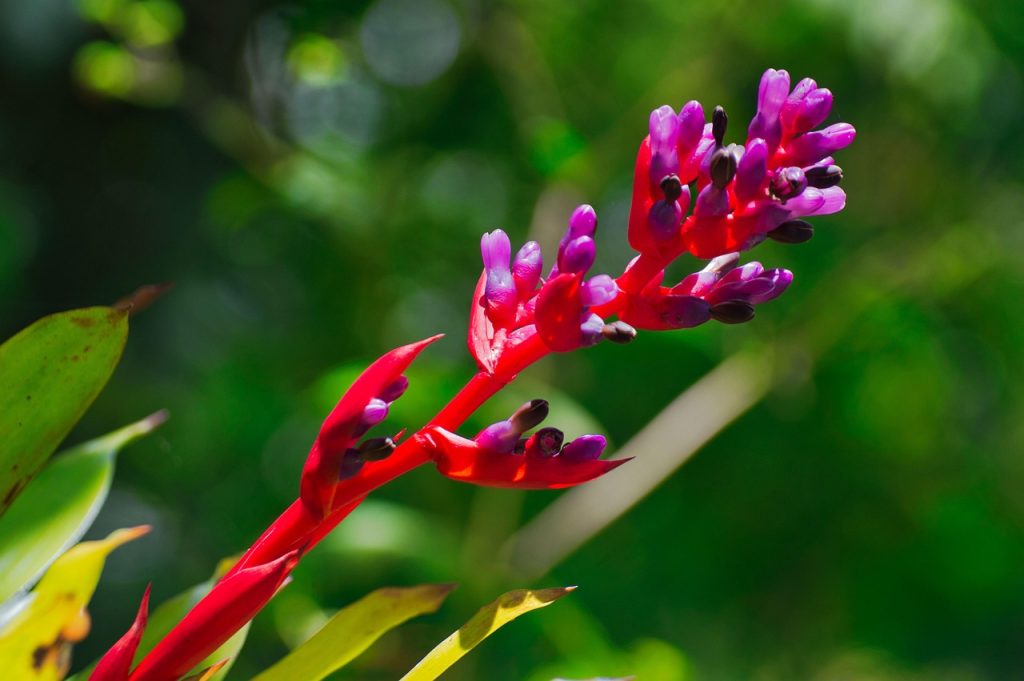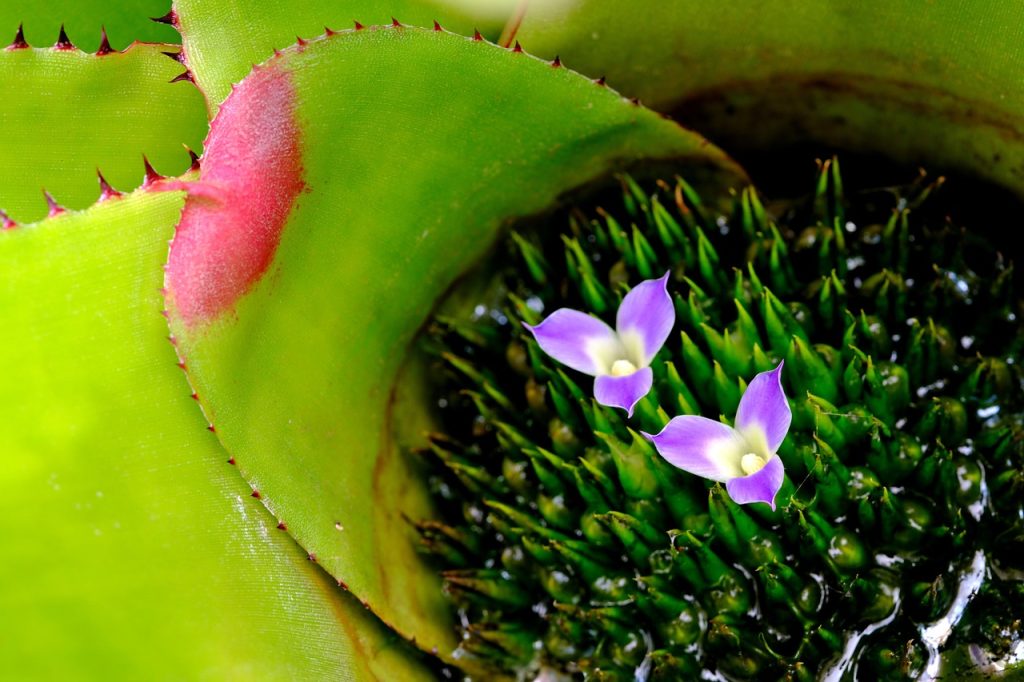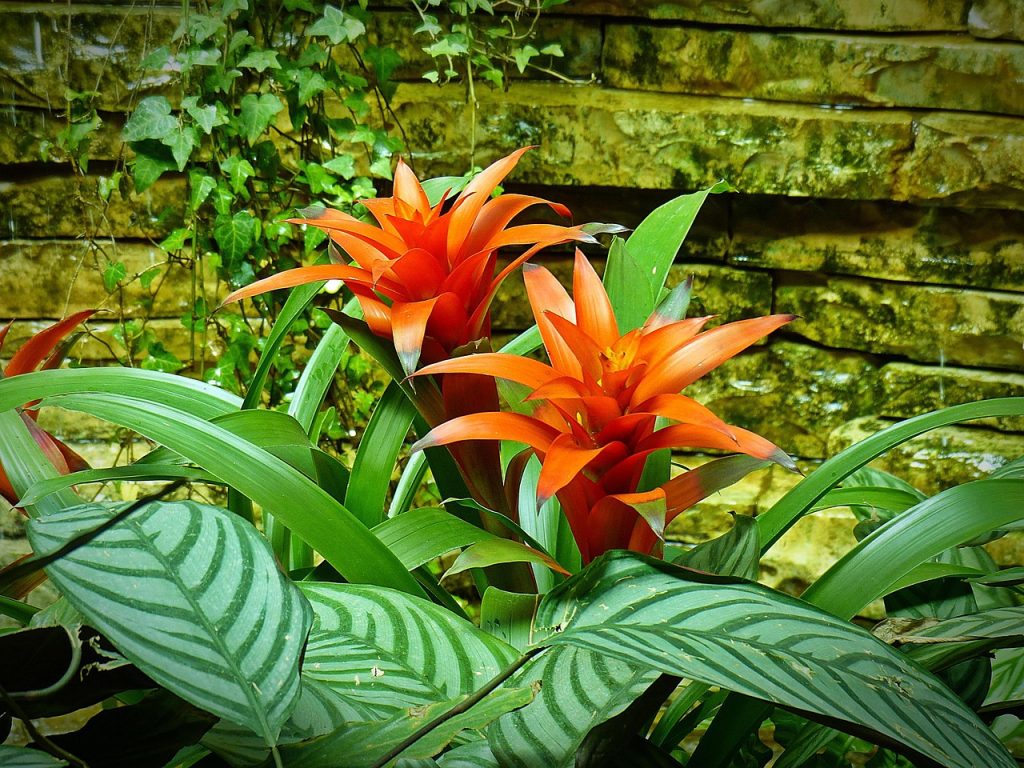Bromeliads are captivating and diverse plants that bring a touch of the exotic to any indoor space or garden. Known for their striking foliage and unique floral structures, these plants are not only visually appealing but also relatively easy to care for, making them a favorite among plant enthusiasts. This article delves into the world of bromeliads, exploring their origins, varieties, care requirements, and practical uses.
Understanding Bromeliads: A Brief Background
Bromeliads are a family of monocot flowering plants known as Bromeliaceae, which includes over 3,000 species. You can predominantly find them in tropical and subtropical regions of the Americas, ranging from Chile to the southeastern United States. Bromeliads thrive in diverse environments, from rainforests to deserts, and are renowned for their adaptability.

Origin and Natural Habitat
Bromeliads have a fascinating evolutionary history. They are believed to have originated in South America, gradually spreading to other parts of the continent and beyond. Many species are epiphytes, meaning they grow on other plants, using them merely for support. This adaptation allows them to access light in dense forest canopies where competition for sunlight is fierce.
Appearance and Characteristics
World of Bromeliads is known for its rosette-shaped leaf arrangement, which often forms a central cup that can hold water. This unique feature helps them survive in dry conditions by capturing and storing rainwater. The leaves can vary widely in color and pattern, ranging from green and silver to vibrant reds and purples. Many bromeliads produce striking flowers that emerge from the center of the rosette, adding to their ornamental appeal.
Popular Varieties of Bromeliads
With thousands of species to choose from, bromeliads offer a wide array of options for plant enthusiasts. Here are some popular varieties:
- Guzmania: Known for their bright, star-shaped flowers, Guzmanias are ideal for indoor environments.
- Neoregelia: These bromeliads are prized for their colorful foliage rather than their flowers.
- Tillandsia (Air Plants): These are unique in that they do not require soil to grow, making them perfect for creative displays.
- Aechmea: Known for their dramatic flowers and striking leaf patterns, Aechmeas are a favorite among gardeners.
Caring for Bromeliads: The Essentials
Despite their exotic appearance, World of bromeliads are surprisingly low-maintenance. Understanding their natural habitat can help you recreate the ideal conditions for these plants to thrive.
Light and Temperature Requirements
Bromeliads prefer bright, indirect light. Direct sunlight can scorch their leaves, while too little light can hinder their growth. A temperature range between 60-80°F (15-27°C) is ideal, making them suitable for most indoor environments. During winter, they can tolerate slightly cooler temperatures but should be protected from frost.
Watering and Humidity
Watering bromeliads involves filling the central cup, allowing the plant to absorb water as needed. It is essential to refresh the water regularly to prevent stagnation and potential rot. Bromeliads also appreciate high humidity, which can be achieved by misting or placing a humidity tray nearby.
Soil and Fertilization
While many bromeliads are epiphytic, those grown in pots require a well-draining soil mix. A combination of orchid bark, perlite, and peat moss works well. Fertilize bromeliads sparingly with a balanced liquid fertilizer diluted to half strength during the growing season.

Planting and Propagation Techniques
Propagating bromeliads is an exciting and rewarding process that allows you to expand your collection. Most bromeliads produce offsets, or “pups,” that grow at the base of the parent plant, and you can propagate them easily.
Steps to Propagate Bromeliads
- Wait until the pup is about one-third the size of the parent plant before removing it.
- Use a sharp, sterilized knife to cut the pup away from the parent plant.
- Plant the pup in a suitable potting mix, ensuring good drainage.
- Water the new plant lightly and keep it in a warm, indirect light location.
Seasonal Care for Bromeliads
While bromeliads are relatively low-maintenance, they do require some seasonal adjustments to ensure optimal growth and flowering.
Spring and Summer Care
During the warmer months, ensure your bromeliads receive adequate light and humidity. This is the active growing period, so regular watering and light fertilization will support healthy development.
Fall and Winter Adjustments
As temperatures drop, reduce watering frequency but maintain humidity levels. Because bromeliads are less active in winter, you can reduce or stop fertilizing them until spring.
Common Problems and Solutions
Like any plant, World of Bromeliads can face challenges in its care. Here are some common issues and how to address them:
Browning Leaf Tips
This is often a sign of low humidity or over-fertilization. Increase humidity around the plant and reduce fertilizer application.
Root Rot
Root rot is caused by overwatering or poor drainage. Ensure the potting mix is well-draining, and allow the soil to dry out between waterings.
Pest Infestations
Aphids and scale insects can occasionally infest bromeliads. Treat with insecticidal soap or neem oil to manage the problem.

Practical Uses of Bromeliads
Bromeliads are not only decorative but also functional. They serve as excellent air purifiers, removing toxins and improving indoor air quality. Additionally, their vibrant colors and unique shapes make them popular choices for floral arrangements and decorative displays.
FAQs About Bromeliads
You can grow bromeliads outdoors in warm, frost-free climates. Protect them from direct sunlight and maintain adequate humidity.
The lifespan of a bromeliad varies, but most live for two to five years. After flowering, the parent plant will die, but it will produce offsets that continue the cycle.
While bromeliads can grow in standard pots, ensure they have drainage holes and use a well-draining potting mix to prevent waterlogging.
Water World of bromeliads once a week, ensuring the central cup is filled. Adjust frequency based on humidity and temperature conditions.